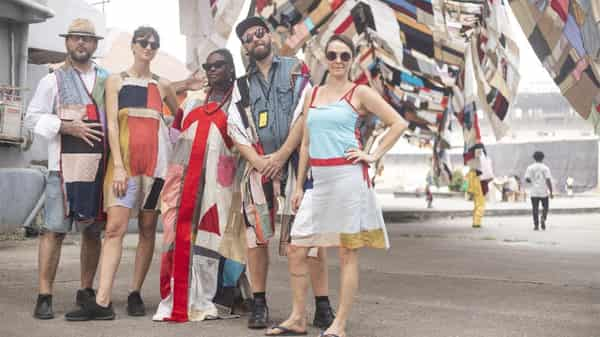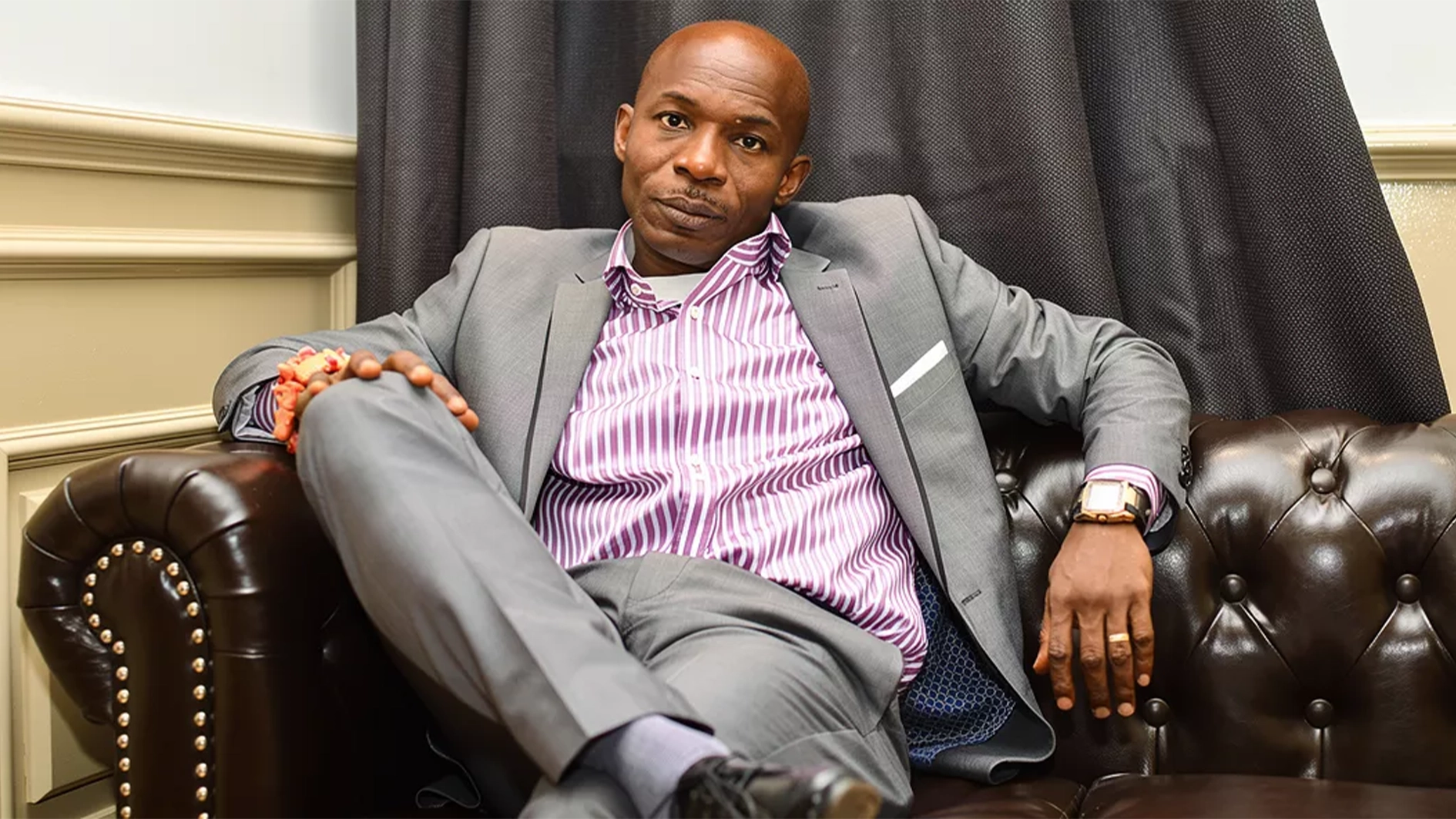
A groundbreaking textile pavilion unfolded at the 4th Lagos Biennial by four artists from around the world with designer Adebola Badmus, the Founder and Creative Director of DSA LAGOS. The project aimed at bringing to the fore, the issue textile waste and the influx of second-hand goods into the country.
Their project, themed ‘Re-(t)exHile’, served as a poignant reminder that Nigeria is not a dumping ground for unwanted clothing from the West. The centerpiece of their pavilion at the Biennial was a striking display of colourful second-hand clothing, locally known as ‘okirika’, meticulously stitched together and spread across as a marquee.
This captivating artwork drew the attention of all who visited the Biennial, igniting discussions about the issue of second-hand clothes inundating Nigeria and its broader implications for the environment and local communities.
Describing how the collaboration unfolded, Badmus said: “Our clients introduced us to these four talented artists who shared our commitment to sustainability. Together, we embarked on a journey to address the pressing issue of textile waste and its impact on our society.”
The artists involved shared their insights into the project and its significance. Maria Alejandra Gatti revealed: “We’ve been working on this project for almost four years, exploring the intersection of refuges and textiles. Our goal is to create a dialogue around the harmful practices of textile dumping and the need for systemic change.”
Martinka Bobrikova added: “We were inspired to address the urgency of the situation in Nigeria and highlight the role of Western countries in perpetuating this cycle of waste. Through our collaboration, we aim to shed light on the environmental and social impacts of textile consumption.”
Oscar de Carmen underscored the importance of understanding the root causes of the problem. “We must recognise that the issue stems from Western consumerism and its disregard for the consequences of textile waste. By confronting this reality, we can begin to enact meaningful change,” Carmen said.
Anto Lloveras, an architect-artist from Madrid, Spain, shared their process, saying: “Last year, the four of us embarked on a research expedition in Lagos, Nigeria, to gather materials for our project at the Lagos Biennial of Art and Architecture. The theme of REFUGE guided our exploration, and textiles emerged as a focal point for our message.”
Elaborating on their process, Lloveras said: “Upon our arrival in the country three weeks ago, accompanied by our local partner Adebola, we ventured to Katangwa market. There, we procured 500 pieces of second-hand and third-hand clothing, which we then meticulously deconstructed and reassembled into a large textile piece. This textile piece is the skin of our pavilion. The pavilion is minimalistic, aside from the specific installation. It was close to the horses, the most iconic in Tafawa Balewa Square, representing the strength of the nation.”
He said that through their collaborative efforts, these artists and designers exemplify the power of art and creativity to effect positive change.
“By challenging perceptions, inspiring action and paving the way for a more sustainable future, they hope to spark a global conversation on the importance of responsible consumption and resource management in the fashion industry and beyond. As a symbolic gesture, the final textile piece will be re-exported to the Global North, where it will be reinstated, repurposed, and used to facilitate public activities aimed at promoting sustainable practices and raising awareness about overconsumption and the need for systemic change in the fashion industry.”
He added that looking ahead, the collaborators aspire to continue their work beyond the Biennial, collaborating with local partners, organising educational programmes, and advocating for responsible consumption practices.
However, the success of this endeavour wouldn’t have been possible without the support of sponsors, whose commitment to sustainability and the arts has been instrumental in bringing this project to fruition. Notable sponsors include the Office for Contemporary Art Norway (OCA), Slovak Art Council, the Embassy of Spain in Nigeria, and the Programme for the Internationalisation of Spanish Culture (PICE), whose contributions have helped make this vision a reality.






